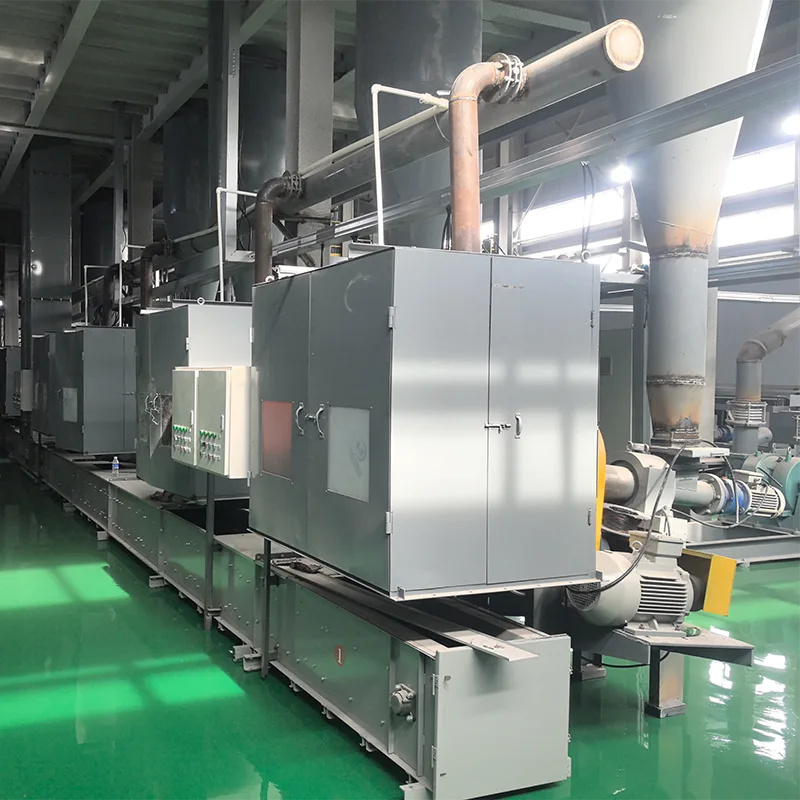What Are the Main Functions of a Red Lead Production Line?
2025-09-12
Red lead, also known as minium or lead(II,IV) oxide, is a critical industrial compound with a vibrant red color. It has historically been used as a pigment and, more importantly, as a protective anti-corrosive primer for steel structures like ships, bridges, and pipelines. A modern Red Lead Production Line is a sophisticated, integrated system designed to manufacture this compound efficiently, consistently, and with a high degree of safety to handle the toxic lead raw material. The primary functions of such a production line extend far beyond simple mixing; they encompass a precise chemical transformation, material handling, and environmental protection.
The core function of our Red Lead Production Line is the controlled oxidation of metallic lead. This is not a simple process but a carefully calibrated thermal reaction. The line takes high-purity lead as its raw material and subjects it to a series of steps to achieve the specific crystal structure and chemical composition (Pb₃O₄) that defines red lead. This ensures the final product meets the stringent industry standards required for effective corrosion inhibition.
Key Functions and Product Parameters of a Modern Production Line
A state-of-the-art production line, like those engineered at our factory, integrates several key subsystems, each with a specific function. The parameters of these components are critical for determining the quality, output, and efficiency of the entire operation.
1. Material Preparation and Melting
The first function is to prepare the raw material. This involves melting high-purity lead blocks in a melting furnace to form molten lead.
Key Parameter: Melting pot capacity of 5-10 metric tons, constructed from high-temperature refractory steel with precise temperature control up to 600°C.
2. Oxidation and Calcination
The molten lead is then atomized and fed into a calcination furnace. This is the heart of the Red Lead Production Line, where controlled air flow and temperature facilitate the oxidation process from lead to litharge (PbO) and finally to red lead (Pb₃O₄).
Key Parameter: Rotary calciner furnace operating within a tight temperature range of 450°C - 500°C, with adjustable rotation speed for optimal reaction time.
3. Grinding and Classification
The calcined output is cooled and then ground to a specific particle size. This function is crucial as the pigmentary and protective properties of the red lead depend heavily on its fineness.
Key Parameter: Ball mill system capable of achieving a consistent particle size distribution, with over 99% of particles passing through a 325-mesh sieve.
4. Dust Collection and Environmental Safety
Perhaps the most critical function in a modern line is containing lead particulate matter. An advanced dust collection system is integral to protecting the environment and ensuring operator safety, reflecting our commitment to responsible manufacturing.
Key Parameter: Closed-loop system with baghouse filters featuring 99.99% efficiency for particulate matter below 10 microns.
Comparison of Production Line Types
| Function | Manual/Batch Line | Semi-Automatic Line | Fully Automatic Line (Rongsheng) |
|---|---|---|---|
| Capacity | Low (1-2 tons/day) | Medium (3-5 tons/day) | High (8-15+ tons/day) |
| Temperature Control | Manual, inconsistent | Partially automated | Fully automated, precise ±5°C |
| Particle Size Consistency | Variable | Moderate | Highly uniform |
| Operator Safety | Low | Medium | High (closed system) |
| Environmental Control | Basic | Improved | Advanced filtration |
Frequently Asked Questions (FAQs)
Q: What is the primary industrial use for the red lead produced by this line?
A: The primary use is in the manufacturing of anti-corrosive primers and paints. When applied to steel surfaces, red lead creates a highly stable, protective layer that prevents rust and corrosion, significantly extending the lifespan of critical infrastructure like ships, steel bridges, and storage tanks.
Q: Why is environmental safety such a emphasized function in a Red Lead Production Line?
A: Lead and its compounds are toxic and require rigorous handling. A modern production line prioritizes environmental safety through fully enclosed processes, advanced dust collection systems, and proper waste management protocols. This prevents the release of lead particles into the atmosphere or water, ensuring the health of operators and compliance with strict environmental regulations. It is a core part of our design philosophy at our factory.
Why Choose Us?
Understanding the main functions of a red lead production line highlights the complex engineering behind this essential industrial material. It’s a system that balances precise chemical processing with stringent safety and environmental controls to deliver a high-quality, effective product.
At Jiangsu Rongsheng Import and Export Co., Ltd., we leverage our deep industry expertise to supply and support advanced production technology. Our solutions are designed for efficiency, reliability, and compliance. If you are looking to upgrade your existing facility or establish a new one, contact us to learn how our technology can meet your production goals.
